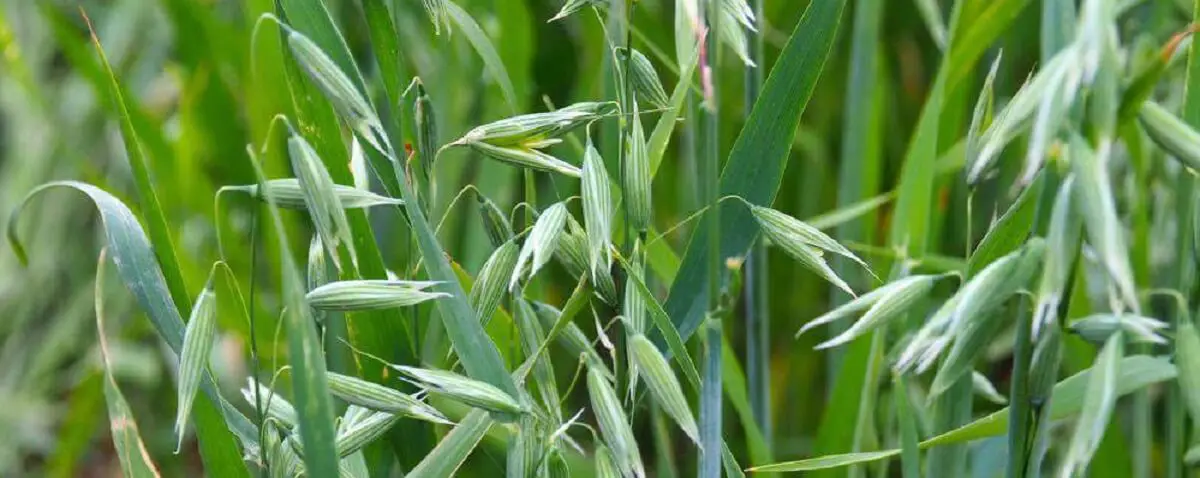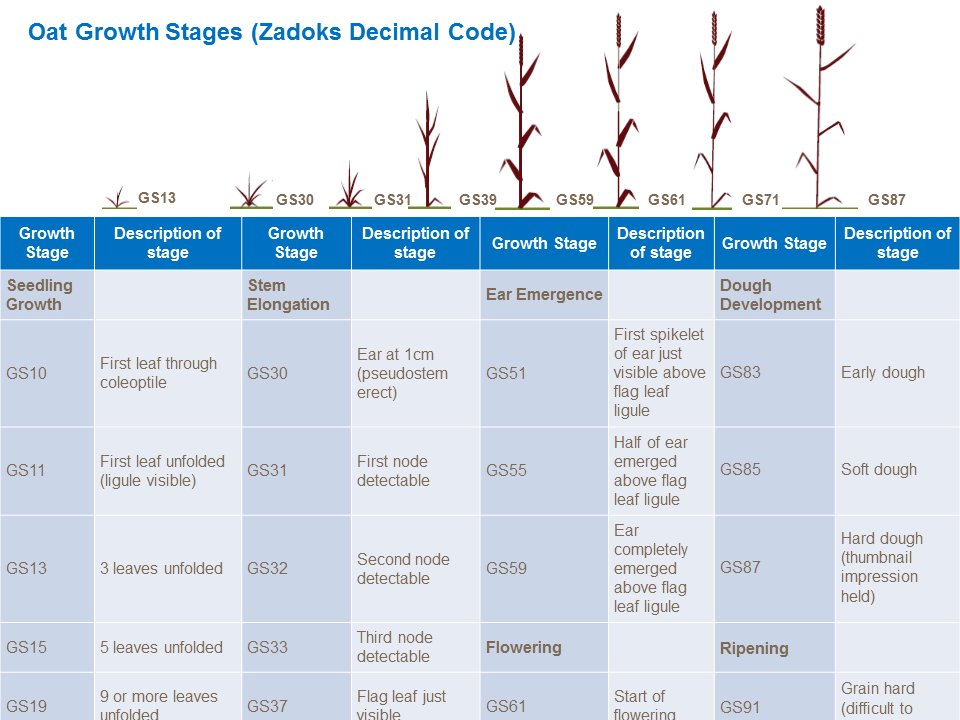Planting Forage Oats Guide What You Need To Know
Why Is Forage Oat A Good Green Manure

You can use forage oats as a cover crop and grow them for use as green manure to add nutrients and extra organic matter into the soil. It will also prevent weeds from moving in.
It is a versatile cover crop that can get planted at different times throughout the season.
Being simple to grow and requiring minimal tending, it has gained popularity among many gardeners and farmers.
It is one of the most mycorrhizal-dependent grasses and has a large leaf surface. Mycorrhizal is a fungus found in soils that oats need to maximize their growth.
It grows best in a pH range between 6 and 7 but can tolerate a wide range of pH levels.
It will take about 60 days for our oat to reach full maturity. We see slow plant growth during the first two weeks after germination, but they pick up quickly by week three.
Is Forage Oats an Annual or Perennial
The Forage oat is an Annual that will need to get planted and grown from seed each year.
Forage Oats Germination Time
Forage oat has a similar life cycle to other annual grasses from germination, vegetative growth, flowering, and seed setting.
On average, it will take the oat seeds from one to 3 weeks to germinate. The cooler the weather, the slower the seeds will germinate.
To give them the best environment for quick germination, you want the temperature to be between 16 to 22 degrees Celcius with a pH between 6 and 7.
Forage Oats Growth Stages
- 1) Germination
- 2) Seedling
- 3) Stem Elongation
- 4) Ear Emergence
- 5) Dough Development

Forage Oats Fertilizer Requirments
Growing the forage oat in an intercropped system, we can add legume plants to provide nitrogen for our oats naturally.
Your purpose for growing the oat will also help determine if any fertilizers should get added. I like to use oat as a cover crop to add more organic material into my soil, helping protect it over the winter.
If you are focused on the highest yield from your oats, adding nitrogen to your soil may be required.
Forage Oats Root System

Forage Oats have a long root system which is very similar to the roots of wheat.
It is a highly branching fibrous root in all stages of its growth and develops quickly.
The roots can reach a depth of 4 to 5 feet by the time the plant fully matures (60 days) in moist open soils.[7]
The root habits will vary depending on the type and quality of the soil they are in.
Lack of water and compacted soil can prevent the weeds from going deeper than 2 feet.
When they get placed in a growing environment with deep, mellow, relatively dry soil, some roots can reach slightly over 6 feet deep.
Forage Oats Seeding Rate
When used in a no-tilled system, seeding rates of approximately 80 to 100 pounds per acre should get used.[8]
Growing Forage Oats
How Late Can You Plant Forage Oats
As a general rule, you need to get the oat planted at least 60 days before the first frost date in your area for fall-planted oats.
Our soil needs a pH level between 6 and 7 for optimal growth. If your ground is extremely dry, you must keep it moist, especially during germination.
Now we need to prepare the soil. Use a spade to help break up the ground and provide better aeration. Use a garden rake to break up the dirt and level your garden plot.
Remove a quarter inch of soil where you are going to lay the seeds down with a row spacing of 7 inches, and cover them back up with the ground removed., Then soak the area with water well.
How Tall Do Forage Oats Grow?
When the forage oats are given around 60 days of growth after germination and reach maturity, they are about 4 feet tall.
Forage Oats Companion Plants
- 1) Oilseed Radishes
- 2) Turnips
- 3) Berseem
- 4) Crimson Clovers
- 5) Alfalfa
- 6) Winter Peas
How Late Can You Plant Forage Oats
Depending on where you live will determine how late, but generally, mid-fall, you want your oats planted.
Where I live, it gets freezing fast, so I can't have it in after mid-September. But in places like Wisconsin, they have until mid-October.
If you are trying to protect the soil and don't need the oats to mature, take 40 days before the first frost for when to plant. There will be enough root growth at this point to protect the ground over winter.
Is Forage Oats a Good Cover Crop
The fast growth will help keep our soils covered, preventing weeds from moving in and soil erosion.
Even when winter kills the oats, it is effective at covering soil and holding valuable nutrients in their tissues.
These nutrients will gradually release in the spring as the soil microbes break down the residue.
You can also keep the oats short in height by using a mower to trim them over the fall. When mowing the plot, keep the trimmings there to decompose, or you can add them to a composting bin.
The residues released from the roots have also been shown to prevent the growth of weeds.
Pests and Potential Problems
Pests
- Cereal cyst nematode
- Stem nematode
- Red-legged earth mite
- Snails
- Cereal aphis (re BYDV transmission)
- Cutworms
- Webworm
- Armyworms
- Bruobia mite
- Wingless grasshoppers
- Australian plague locust
Diseases
- Leaf rust
- Stem rust
- Septoria blotch
- Bacterial blight
- Barley yellow dwarf virus
- Halo blight
- Stripe blight
- Powdery mildew
Advantages of Oats
It will scavenge nitrogen
It has a deep and fibrous root mass
The residues in the roots are shown to reduce weed growth.
On large plots, you can use aerial applications with a high success rate
Very popular and works well when planted for foraging
Oats work very well with other cover crops mixes
Less prone to insect infestations over other cereal grasses.
Tilling it into your soil as green manure helps improve your soil's fertility.
A deep root system allows for more organic matter in clay soils, improving the soil's tilth.
Summary
Forage oats are a quick-developing plant with large root structures that helps prevent soil erosion while adding organic material to our gardens.
The residues in the roots will help prevent winter weeds from moving into our gardens.
We can till them in the spring as a source of green manure for our soil. This will help us increase our soil tilth and aeration while providing food for the microorganisms and earthworms.
Similar Articles
Growing Scindapsus Aureum
Planting Winter Peas
Planting Partridge Pea
Planting Alsike Clover
[1]https://fyi.extension.wisc.edu/forage/fall-grown-oat-forages-cultivars-planting-dates-and-expected-yields/
[2]https://plantcovercrops.com/oats-a-wonderful-and-versatile-cover-crop
[3]https://u.osu.edu/beef/2013/06/19/oats-are-an-annual-forage-to-consider-as-a-double-crop-after-wheat/
[4]https://www.topcropmanager.com/n-p-and-k-fertilizer-management-for-oats-935
[5]https://nph.onlinelibrary.wiley.com/doi/pdf/10.1111/j.1469-8137.1978.tb01628.x
[6]https://www.sciencedirect.com/science/article/abs/pii/S0929139397000139
[7]https://soilandhealth.org/wp-content/uploads/01aglibrary/010139fieldcroproots/010139ch7.html
[8]https://u.osu.edu/beef/2013/06/19/oats-are-an-annual-forage-to-consider-as-a-double-crop-after-wheat/